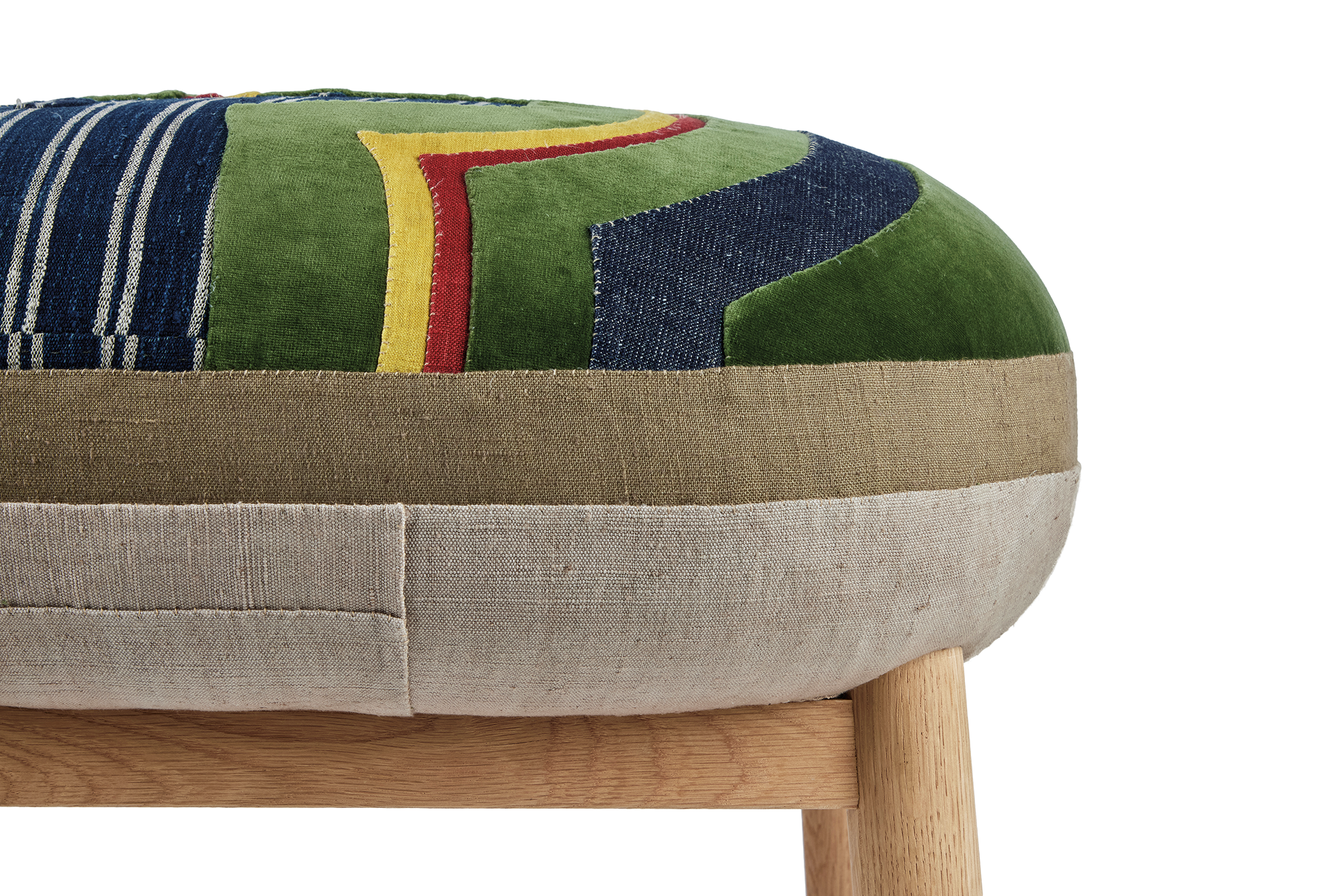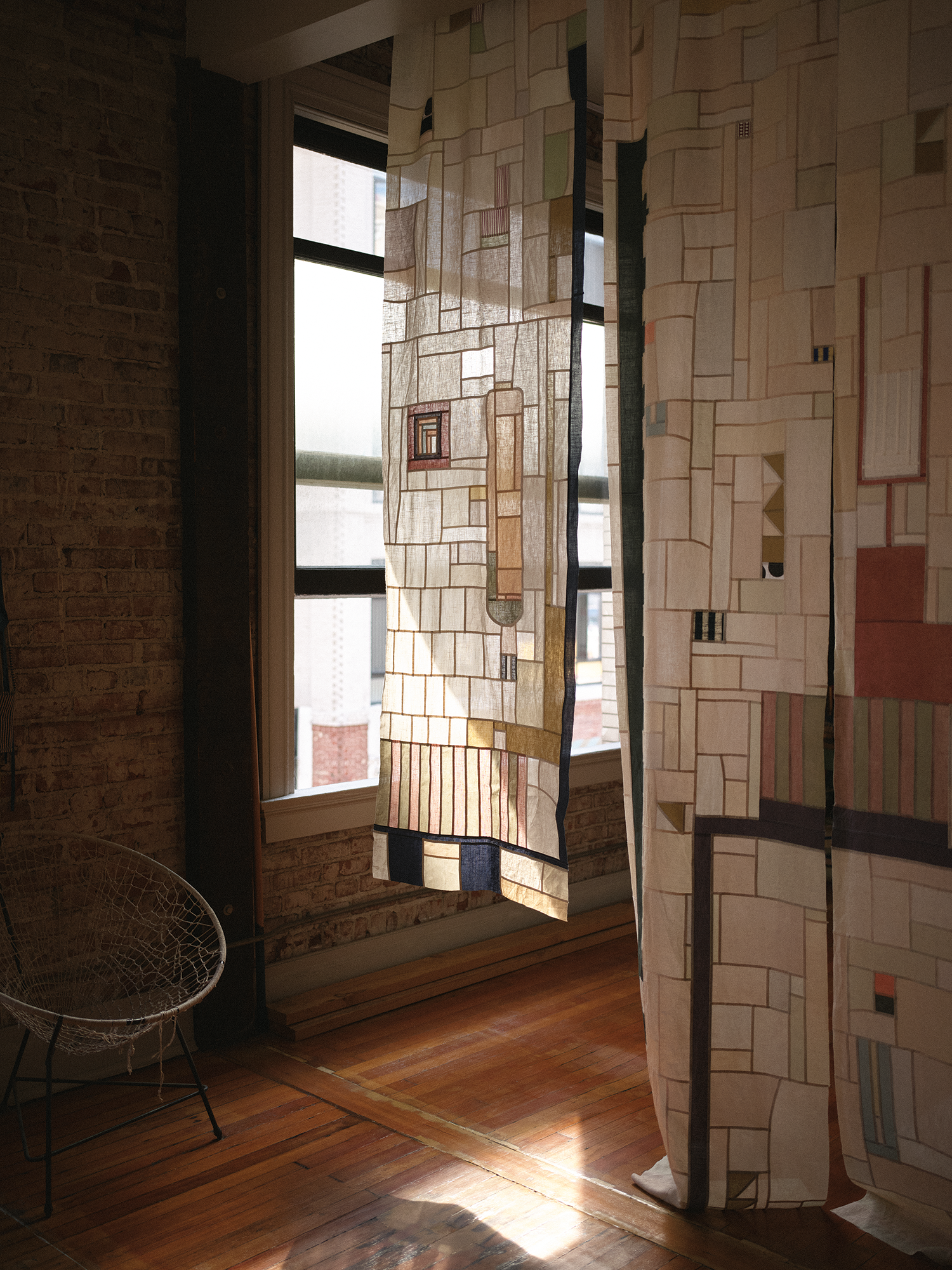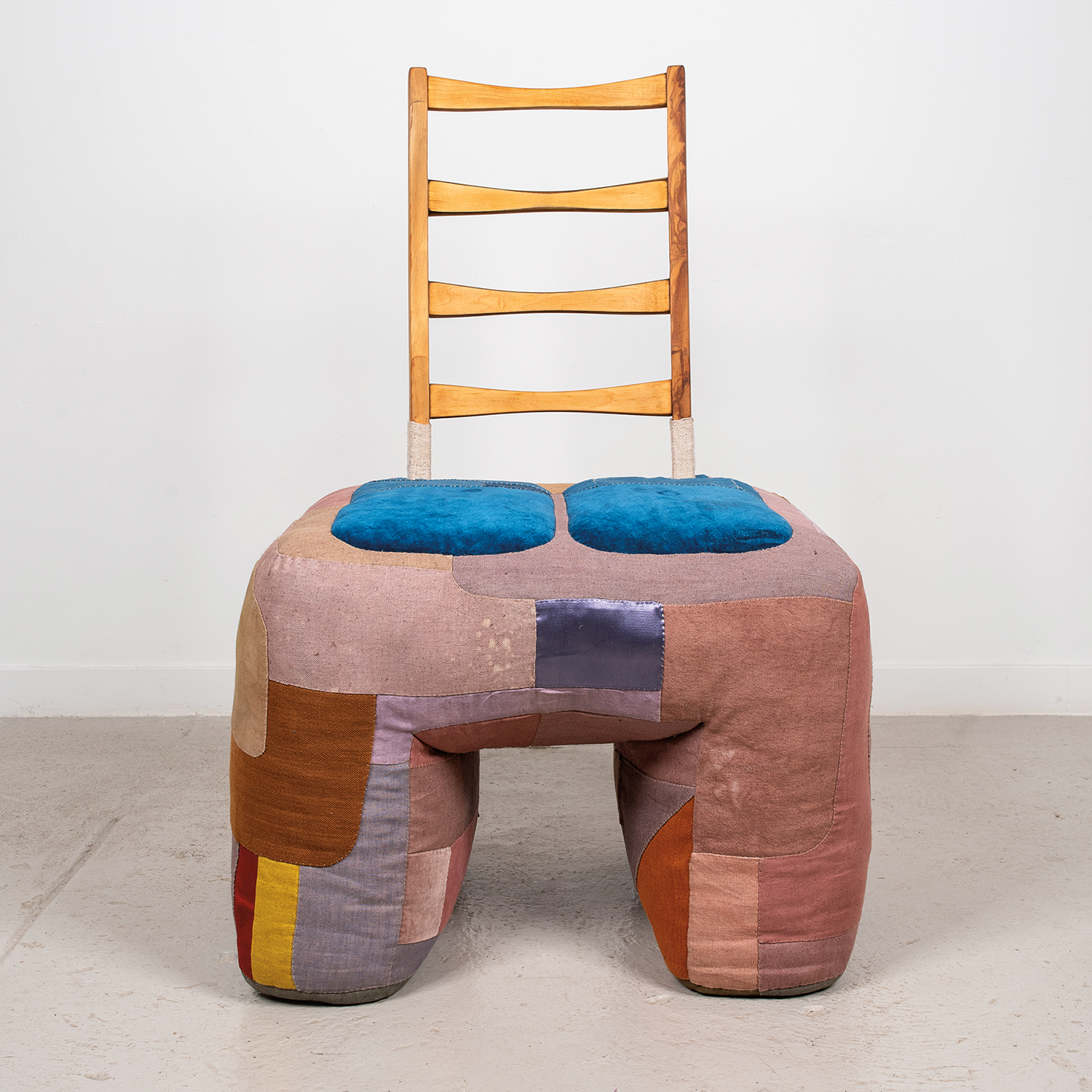If you were to send one of Adam Pogue’s stylish patchwork textiles to 23andMe for analysis, the aesthetic DNA would roam all over the map—from patchwork traditions such as the quilts of Gee’s Bend, Korean bojagi, and Japanese boro, to the sunny, color-drenched vibes of Los Angeles, where Pogue makes his home and atelier in a defiantly ungentrified building a short stroll from the Fashion District on the edge of Skid Row. “I love my surroundings,” he says. “I’m inspired by all the unintentionally interesting things I see—from the colors of the signs to the storefronts piled high with clothes and random goods.” In his airy, sun-washed studio, Pogue stitches foraged fabric remnants into high-end home furnishings such as curtains, pillows, bed coverings, and ottomans.
Pogue first reached for a needle and thread in college, where he studied architecture and sculpture. “I had no money—I needed materials that were either free or super cheap,” recalls Pogue, whose output ranged from amorphous fabric objects stuffed with batting to an eight-foot tall, three-legged sculpture made from salvaged wood, faux fur, and metal piping. After stints as a draftsman, bookseller, and barista, Pogue, who is 46, helped run retail operations and art projects for Free City, the cult favorite clothing company founded by Nina Garduno. During his 11-year stint, Pogue helped to conceive and fabricate everything from gigantic floor pillows inspired by color field painting to realistic, life-size lions for a museum-themed store installation.
So when it came time to re-cover his own threadbare couch in 2010, Pogue was undaunted. “I had very little cash, but I gathered a bunch of old jeans and cords, cut out shapes, and kept stitching until the entire thing was re-covered, then did it all again to elevate the composition,” he says. “Almost every culture has some form of repurposing worn-out clothing into something new—of necessity. I’m a proud part of that tradition.” Pogue also turned old bedsheets—cut up, stitched together, and dyed—into a room divider and made a hand-looped rug/wall hanging from a pile of ripped-up Free City fleece remnants.
These projects and more made their way to then-nascent Instagram and caught the eye of designer Justina Blakeney, who included Pogue’s apartment in her book The New Bohemians: Cool and Collected Homes (Abrams, 2015). The book’s photographer, Dabito, also featured Pogue on his design blog, Old Brand New. “And it all kind of snowballed from there, very organically,” says Pogue, who also uses the platform to meet and engage with like-minded makers, such as quilter Heidi Parkes, weaver Janelle Pietrzak, and ceramist Bari Ziperstein.

Pogue irons fabric in his downtown Los Angeles studio. His apartment is in the same building, which once served as a Canadian Embassy.













